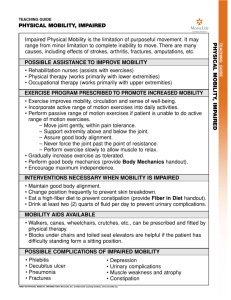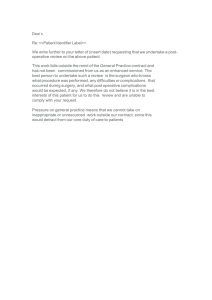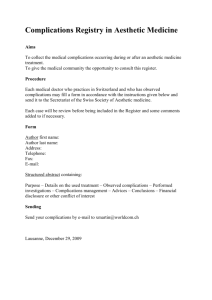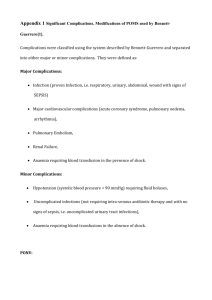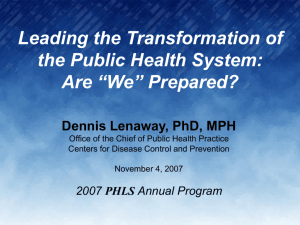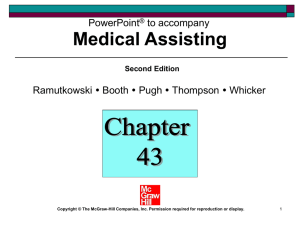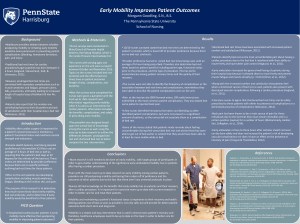Impaired Physical Mobility
advertisement
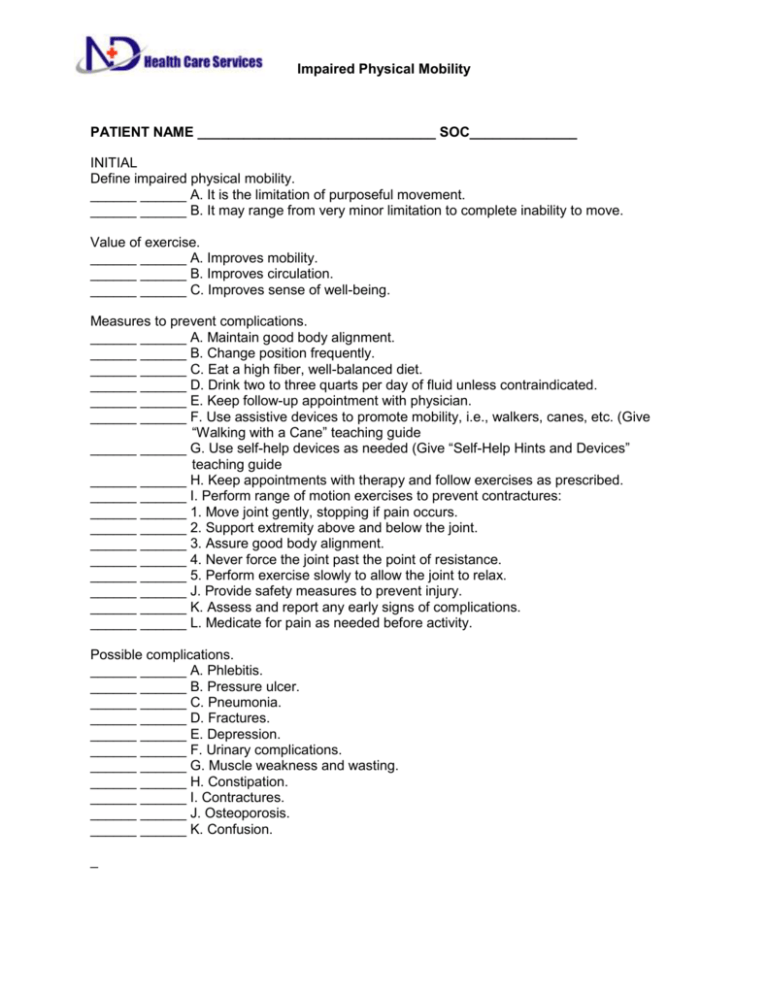
Impaired Physical Mobility PATIENT NAME _______________________________ SOC______________ INITIAL Define impaired physical mobility. ______ ______ A. It is the limitation of purposeful movement. ______ ______ B. It may range from very minor limitation to complete inability to move. Value of exercise. ______ ______ A. Improves mobility. ______ ______ B. Improves circulation. ______ ______ C. Improves sense of well-being. Measures to prevent complications. ______ ______ A. Maintain good body alignment. ______ ______ B. Change position frequently. ______ ______ C. Eat a high fiber, well-balanced diet. ______ ______ D. Drink two to three quarts per day of fluid unless contraindicated. ______ ______ E. Keep follow-up appointment with physician. ______ ______ F. Use assistive devices to promote mobility, i.e., walkers, canes, etc. (Give “Walking with a Cane” teaching guide ______ ______ G. Use self-help devices as needed (Give “Self-Help Hints and Devices” teaching guide ______ ______ H. Keep appointments with therapy and follow exercises as prescribed. ______ ______ I. Perform range of motion exercises to prevent contractures: ______ ______ 1. Move joint gently, stopping if pain occurs. ______ ______ 2. Support extremity above and below the joint. ______ ______ 3. Assure good body alignment. ______ ______ 4. Never force the joint past the point of resistance. ______ ______ 5. Perform exercise slowly to allow the joint to relax. ______ ______ J. Provide safety measures to prevent injury. ______ ______ K. Assess and report any early signs of complications. ______ ______ L. Medicate for pain as needed before activity. Possible complications. ______ ______ A. Phlebitis. ______ ______ B. Pressure ulcer. ______ ______ C. Pneumonia. ______ ______ D. Fractures. ______ ______ E. Depression. ______ ______ F. Urinary complications. ______ ______ G. Muscle weakness and wasting. ______ ______ H. Constipation. ______ ______ I. Contractures. ______ ______ J. Osteoporosis. ______ ______ K. Confusion. _


